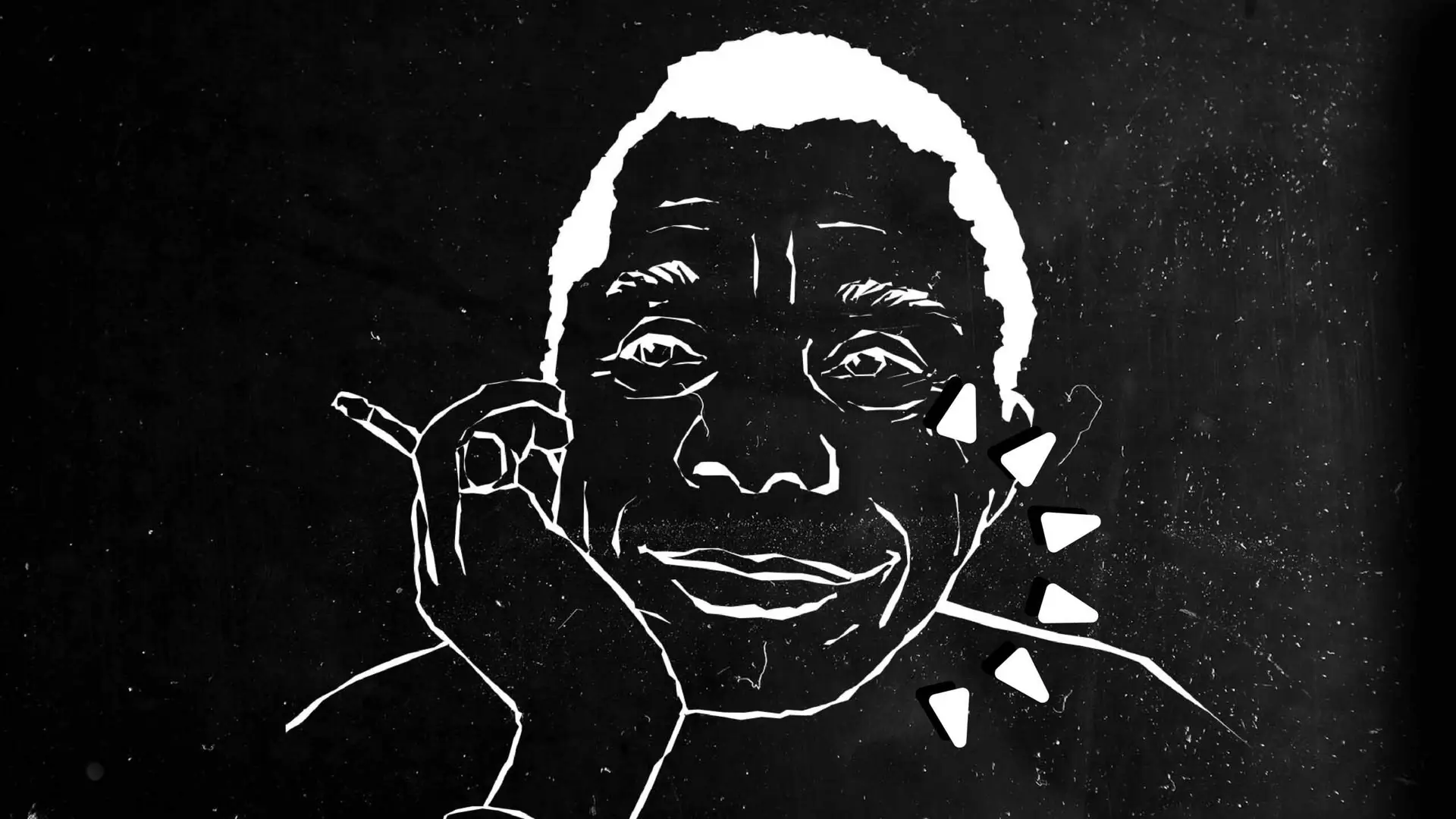The last several years have produced a steady stream of research dedicated to the racial wealth gap. While it’s not a new conversation, the wealth gap concept is a recent frame.
Of course, the origins of the (Black to white) racial wealth gap trace back to slavery. In the twenty to thirty years following Emancipation, the gap actually began to close. But the creation of racist federal policies such as the Homestead Act that gave European immigrants free land, the National Housing Act that guaranteed loans to whites, yet legally refused them to Blacks and the Social Security Act which excluded jobs mostly held by Black people, all served to block racial progress.
Now, with the financialization of the U.S. economy which has produced a system designed to make the wealthy even wealthier, those who already have wealth (disproportionately white people) have an outsized advantage.
In this edition of the Clapback, we are sharing 25 reports on the racial wealth gap to:
1.
Establish the wealth gap as a well-documented phenomenon.
Researchers have studied it every which way – as it relates to place, asset classes, generational time. The implications of the wealth gap for health, education and mobility. The data is available. And we know how we got here.
2.
Organize the resources into one central location.
Data is power. But sometimes, the information is hard to find. Therefore, we wanted to aggregate and organize a first grab of such reports, to help advocates effectively ‘make the case” as they carry out their work.
3.
Encourage the further utilization of the data.
Researchers have done a stellar job of establishing a foundation for our knowledge and understanding of the racial wealth gap. Among these articles, you’ll find stats and policy recommendations to catalyze and inform your work.
25 Studies on Closing the Racial Wealth Gap
1) BLADE (Black Liberation and the Digital Economy) Blueprint, Black Innovation Alliance, 2023, (link).
The BLADE (Black Liberation and the Digital Economy) Blueprint explores how Black entrepreneurs are creating wealth through digital businesses.
Big Takeaway: Black digital businesses outperform others across numerous indicators and is the best bet for closing the racial wealth gap.
2) Overcoming Compound Racial Inequity Policies and Costs for Closing the Black-White Wealth Gap, Rand, 2022 (link).
The report explores how large wealth allocations would need to be to significantly impact racial wealth disparity?
Big Takeaway: There is no evidence that the wealth gap could ever close without significant intervention.
3) The Devaluation of Assets in Black Neighborhoods: The Case of Residential Property, Brookings, 2018 (link).
This report seeks to understand how much money majority-Black communities are losing in the housing market stemming from racial bias
Big Takeaway: The study finds that owner-occupied homes in Black neighborhoods are undervalued by $48,000 per home on average, amounting to $156 billion in cumulative losses.
4) The Economic Impact of Closing the Racial Wealth Gap, McKinsey & Company, 2019 (link).
New research quantifies the impact of closing the gap and identifies key sources of this socioeconomic inequity.
Big Takeaway: The widening racial wealth gap disadvantages black families, individuals, and communities and limits black citizens’ economic power and prospects, and the effects are cyclical. Such a gap contributes to intergenerational economic precariousness.
5) Eliminating the Black-White Wealth Gap Is a Generational Challenge, Center for American Progress. 2021 (link).
In 2019, the Center for American Progress invited a number of leading national experts on racism and wealth to join the National Advisory Council on Eliminating the Black-White Wealth Gap to make eradicating this racial disparity a pressing policy goal for the next presidential administration and to identify steps necessary to accomplish it.
Big Takeaway: The National Advisory Council on Eliminating the Black-White Wealth Gap developed a range of novel policy proposals throughout 2020 that followed the aforementioned principles. These policies are especially targeted toward Black Americans, building and expanding on several existing proposals that could reduce the wealth disparity between Black and white households by helping Black Americans gain more wealth.
6) Wealth of Two Nations: The U.S. Racial Wealth Gap, 1860-2020, Federal Reserve Bank of Minneapolis, 2022 (link).
This paper constructs the first continuous series on white-to-Black per capita wealth ratios from 1860 to 2020, drawing on historical census data, early state tax records, and historical waves of the Survey of Consumer Finances, among other sources. Incorporating these data into a parsimonious model of wealth accumulation for each racial group, the authors document the role played by initial conditions, income growth, savings behavior, and capital returns in the evolution of the gap.
Big Takeaway: Since the 1980s, the wealth gap has widened again as capital gains have predominantly benefited white households, and income convergence has stopped.
7) Closing the Racial Inequality Gaps: The Economic Cost of Black Inequality in the U.S. Citi, 2020 (link).
The study outlines how governments, corporations, and individuals can work together to eliminate inequality gaps for good.
Big Takeaway: The analysis in the accompanying report shows if four key racial gaps for Blacks — wages, education, housing, and investment — were closed 20 years ago, $16 trillion could have been added to the U.S. economy. And if the gaps are closed today, $5 trillion can be added to U.S. GDP over the next five years.
8) Disparities in Wealth by Race and Ethnicity in the 2019 Survey of Consumer Finances, Board of Governors of the Federal Reserve System, 2020, (link).
This FEDS Note explores patterns in wealth holding by race and ethnicity, as well as some key issues related to the accumulation of wealth, using new data from the 2019 Survey of Consumer Finances (SCF).
Big Takeaway: Data from the 2019 Survey of Consumer Finances (SCF) show that long-standing and substantial wealth disparities between families in different racial and ethnic groups were little changed since the last survey in 2016; the typical White family has eight times the wealth of the typical Black family and five times the wealth of the typical Hispanic family.
9) Ten Solutions to Bridge the Racial Wealth Divide. Institute for Policy Studies, 2020, (link).
This report offers ten solutions broken into three categories: Programs, Power, and Process.
Big Takeaway: The solutions in this report include: Baby Bonds, Guarantee Employment and Significantly Raise the Minimum Wage, Invest in Affordable Housing, Medicare for All, Postal Banking, Significantly Raise Taxes on the Ultra-Wealthy, Turn Upside-Down Tax Expenditures Right-Side Up, Congressional Committee on Reparations, Improve Data Collection on Race and Wealth and Racial Wealth Audit.
10) Dreams Deferred: How Enriching the 1 Percent Widens the Racial Wealth Gap, Institute for Policy Studies, 2019 (link).
Dreams Deferred, presents a snapshot of the racial wealth divide in the United States today, looking at the current state of household wealth, income, homeownership, debt, and other economic factors. It also reviews long-term trends that led to this current moment, as well as, the historical policies and contributors to this deepening divide.
Big Takeaway: Between 1983 and 2016, the median Black family saw their wealth drop by more than half after inflation, compared to a 33% increase for the median White household. Meanwhile, the number of households with $10 million or more skyrocketed by 856%.
11) The Importance of Wealth to Family Well-Being, John T. Gorman Foundation. 2023 (link).
The report suggests that to create more economic opportunity for families, policy makers and business leaders must develop tailored interventions that address the structures of wealth inequality.
Big Takeaway: The report details the systemic forces that have fostered wealth inequality and outlines three strategic imperatives that would address those systemic forces and create more equitable opportunity for New England families: 1) Reimagine the parameters of ownership to mitigate risk and expand wealth creation, 2) Improve access to appreciable assets and 3) Protect family wealth.
12) Closing the Gaps: Building Black Wealth through Homeownership, Urban Institute, 2020, (link).
This report reviews the critical role housing equity plays in building wealth for Black families, reviews the historical factors that have contributed to disparate outcomes, and explores ways to improve wealth equity through homeownership. The report closes with a discussion of how to promote policies that accelerate wealth accumulation and equity for households of color.
Big Takeaway: Policy interventions that promote sustainability through times of crisis and focus on closing racial homeownership and wealth gaps are needed to change the trajectory for Black homeownership and wealth.
13) Survey of Consumer Finances (SCF), Board of Governors of the Federal Reserve System, 2023. (link).
The Survey of Consumer Finances (SCF) is normally a triennial cross-sectional survey of U.S. families. The survey data include information on families’ balance sheets, pensions, income, and demographic characteristics.
14) Disrupting the Racial Wealth Gap. American Sociological Association, 2019, (link).
The report asserts that focusing on the racial wealth gap serves two critical functions: providing a scope for the extent and direction of racial inequality, a story on which path the nation is headed; and a reliable racial justice filter for policy and institutional practice.
Big Takeaway: The study argues that among policy ideas to remedy this stark racial wealth divide, baby bonds, basic income, reducing student loan debt, and federal job guarantees hold transformative potential.
15) Closing the Racial Divide in the U.S. and Massachusetts: A Baseline Analysis, Massachusetts Taxpayers Foundation, 2021, (link).
The purpose of the report is to catalog current data available on key areas contributing to the racial disparities in our country and state in order to provide a baseline for measuring progress from this point forward.
Big Takeaway: In virtually every facet of our society, the data documenting racial disparities in the United States and Massachusetts are abundant and overwhelming. Racial inequality permeates so many aspects of today’s world that it is as though people of color and whites live in two different societies, governed by two different sets of rules.
16) The Color of Wealth in Boston. Federal Reserve Bank of Boston, (link).
The report shows that with respect to types and size of assets and debt held, the data collected on white households and nonwhite households exhibit large differences.
Big Takeaway: The result is that the net worth of whites as compared with nonwhites is staggeringly divergent.
17) Building a Beloved Economy: A Baseline and Framework for Building Black Wealth in Atlanta, Atlanta Wealth Building Initiative, 2015 (link).
The report provides an overview of the state of Black wealth, poverty, income, debt, access to capital, housing, business ownership, and jobs in Atlanta.
Big Takeaway: The study proposes a new framework for understanding and confronting the massive racial wealth divide and its impact on Black Atlantans.
18) The Road to Zero Wealth: How the Racial Wealth Divide is Hollowing Out America’s Middle Class, Prosperity Now, 2017, (link).
The report examines Federal Reserve data over a 30-year period (1983-2013) to understand the growing racial wealth divide facing Black and Latino households at the median, and explores the ways that accelerating declines in wealth for these communities are impacting the American middle class.
Big Takeaway: Without a serious change in course, the country is heading towards a racial and economic apartheid state.
19) The Ever-Growing Gap: Failing to Address the Status Quo Will Drive the Racial Wealth Divide for Centuries to Come, Institute for Policy Studies and the Corporation for Enterprise Development, 2016, (link).
The report examines our country’s growing racial wealth divide and the trajectory of that divide.
Big Takeaway: In the absence of significant reforms, the racial wealth divide—and overall wealth inequality—are on track to become even wider in the future.
20) Panel Study of Income Dynamics (PSID), University of Michigan, 2023, (link).
This study serves as the longest running longitudinal household survey in the world.
Big Takeaway: The study began in 1968 with a nationally representative sample of over 18,000 individuals living in 5,000 families in the United States. Information on these individuals and their descendants has been collected continuously, including data covering employment, income, wealth, expenditures, health, marriage, childbearing, child development, philanthropy, education, and numerous other topics.
21) Race and Economic Opportunity in the United States: An Intergenerational Perspective. The Quarterly Journal of Economics, 2018, (link).
The report studies the sources of racial and ethnic disparities in income using de-identified longitudinal data covering nearly the entire U.S. population from 1989-2015.
Big Takeaway: These findings suggest that reducing the black-white income gap will require efforts whose impacts cross neighborhood and class lines and increase upward mobility specifically for black men.
22) Closing the racial wealth gap requires heavy, progressive taxation of wealth, Brookings, 2020, (link).
The paper begins by describing the racial wealth gap, its origins and some of the recent spending proposals to reduce or eliminate it. It then examines how the racial wealth gap interacts with wealth concentration in America and demonstrates the vital role that taxation must play in closing the racial disparity in wealth.
Big Takeaway: A comprehensive agenda to close the racial wealth gap would likely include reforms to income and estate taxation, plus new taxes on wealth and inheritance, buttressed by a substantial investment in enforcement.
23) Testing the efficacy of three informational interventions for reducing misperceptions of the Black–White wealth gap. Proceedings of the National Academy of Sciences, 2021, (link).
Findings from this study highlight how data, along with current recommendations in the social sciences, can be leveraged to promote more accurate understandings of the magnitude of racial inequality in society, laying the necessary groundwork for messaging about equity-enhancing policy.
Big Takeaway: Numbers, not narratives, remedy misperceptions of the racial wealth gap. Many Americans either misperceive or don’t know about substantial, longstanding wealth disparities between Black and white American families.
24) Wealth Matters for Health Equity. Robert Wood Johnson Foundation, 2018, (link).
This report examines the links between wealth and health equity, with data from recent studies showing how a country’s overall health is linked not only with its overall level of wealth, but also with how wealth is distributed. The authors describe strategies for building wealth among groups of people for whom access to wealth-generating opportunities have been historically limited.
Big Takeaway: Building wealth and income among people who have long lacked opportunity is essential—and possible—for improving health equity.
25) How Student Debt and the Racial Wealth Gap Reinforce Each Other, The Century Foundation, 2019, (link).
This report compiles the research on racial disparities both in the use of student debt and in higher education outcomes, specifically focusing on disparities between white students and Black students.
Big Takeaway: The racial wealth gap, high student debt levels, and unequal higher education access and outcomes for students of color—and particularly women of color—continuously reinforce each other.



